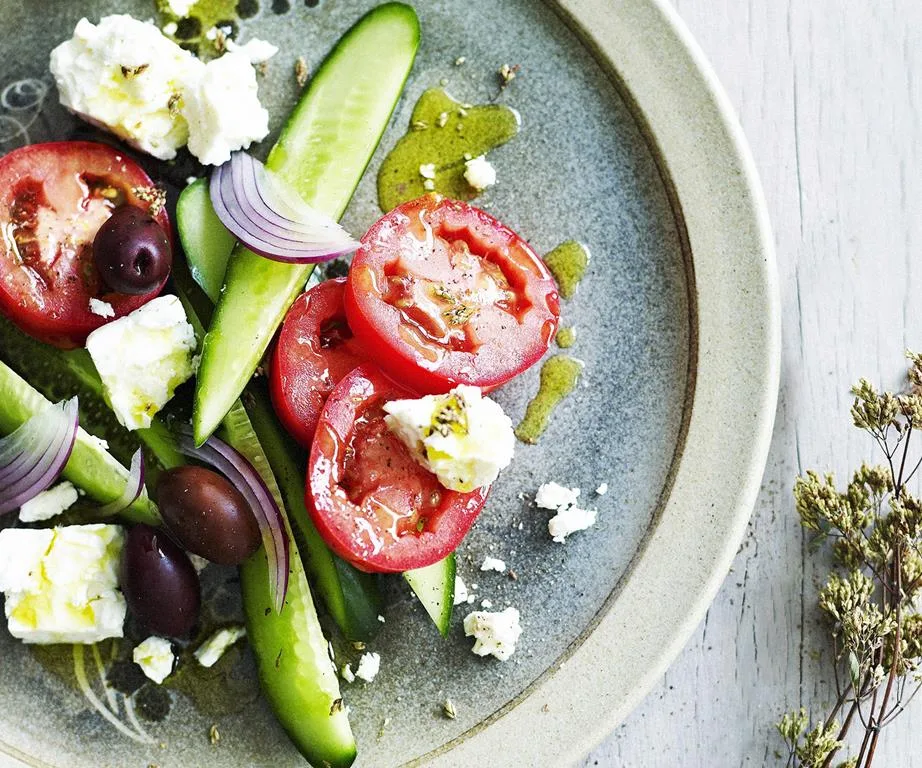From workouts to how well you respond to certain medications, health is becoming personalised – and that includes your diet.
This is where metabolic typing comes in. The concept that we all digest and metabolise food differently based on our genes first made headlines in the late 70s when William Wolcott, a metabolic researcher, discovered a relationship between the body’s oxidative system (which determines how quickly your body converts food into energy) and the autonomic nervous system (which regulates involuntary actions). In most people one ‘system’ is more dominant.

We get that. (Image: CBS)
“I became interested in metabolic typing when I realised I wasn’t getting results with around 50 per cent of my clients by following accepted dietary guidelines,” says Elizabeth Orme, a nutritionist and metabolic typing practitioner.
“And I was fascinated why some people could experience reduced cholesterol levels while still eating a lot of meat and dairy. It made me look for something that took the view that different people metabolise foods differently.”
READ MORE: The biggest ketogenic diet before-and-after transformations.

Eating for your metabolic type
There are six metabolic types in total; they’re known as parasympathetic, autonomic balanced, sympathetic, slow oxidiser, mixed oxidiser and fast oxidiser. The proportion of protein, carbohydrates and fats, as well as specific foods you’re advised to eat, depends on what type you are.
“So, if you’re a fast oxidiser, we advise eating a high-protein, high healthy-fat diet but not too many fruits and vegetables,” says Orme.
“On the other hand, slow oxidisers do best on just a small amount of protein but plenty of fruit and vegetables. We don’t ‘ban’ whole food groups, but it is a matter of eating the right mix of protein, carbohydrates and fats to suit your metabolic type.”
Still, Orme says some of the diets can seem restrictive.
“Compared to the picture we all have of a ‘healthy diet’, some of the diets can seem quite unbalanced. But the thing to remember is that everyone also has a subtype, so after you’ve incorporated the main dietary advice, most people can start to introduce small amounts of other foods, if they like, which makes the diets less restrictive and more balanced.”
But each type does have one or two foods that they’re advised not to eat.
“For example, fast oxidisers shouldn’t touch soy products – they just don’t do well on them,” says Orme.
WATCH: What kind of dieter are you? Post continues…
What’s the benefit?
When you’re eating the right food for your metabolic type, you’ll feel and function better, says Orme, thanks to the way different foods affect the pH of your body. Some reported benefits include increased energy levels, better mood and a stronger immune system.
“The benefit of balancing your pH is particularly noticeable for people who, without knowing it, are eating very differently to what their metabolic type actually needs or who aren’t in the best health to start with.”
Weight loss can also be an added benefit.
“Generally, it tends to be slow, gradual weight loss – once you’re eating the right food for your type, your body metabolises the food you feed it more efficiently and weight loss can result from that.”
TAKE THE QUIZ: How healthy are you really?
A certified metabolic typing practitioner will ask you to complete a professional, online questionnaire.
“Until around 2006, many practitioners worked out your type by putting you through two to three hours of clinical testing,” says Orme. “Now, the questionnaire has been shown to be just as effective at determining metabolic types.”
You need an assessment by a metabolic typing practitioner to find out which metabolic type (and subtype) you are, but your answers to these questions will give you a few clues.

Eating the right food for your metabolic type will make you feel and function better.
Take the metabolic quiz!
**1. What’s your relationship with coffee like?
A.** I function pretty well on coffee.
B. I can take it or leave it.
C. I don’t enjoy it – it makes me feel speedy or a bit nauseated.
**2. When you wake up in the morning, are you:
A.** Not hungry. I don’t usually feel like eating breakfast.
B. Hungry, but not ravenous.
C. Starving! I love breakfast.
**3. How do you feel about eating just before bedtime?
A.** It leads to a bad night’s sleep.
B. Makes no difference to me.
C. I think it helps me sleep better.
**4. What’s your general attitude towards food?
A.** I eat to live, and sometimes forget to eat.
B. I enjoy food and don’t usually skip meals.
C. I live to eat! Food is a big part of my life.
**5. How do you feel about salt?
A.** I often find that things taste too salty for my liking.
B. I haven’t really noticed.
C. Sometimes I crave the flavour and will always add more salt to my meals.
**6. How often do you snack?
A.** Hardly ever. Three meals a day is plenty.
B. Occasionally, if I’m feeling a bit peckish.
C. Most days, between meals.
**7. Sour foods and tastes, like lemon juice, pickles and sauerkraut, are:
A.** Definitely not my idea of yummy to eat.
B. Okay; I can take them or leave them.
C. Delicious. Sometimes I crave them.
**8. My ideal dinner is:
A.** Something light, like a poached chicken breast and a salad.
B. I don’t really have a preference.
C. Something that is quite hearty and heavy.

Do you like a light salad for dinner or something a bit heavier? (Images: Getty Images)
So what do your results say?
Mostly As: You may be a sympathetic or slow oxidiser. These are sometimes called carb types, and can do well on diets containing up to 60 per cent carbs, 25 per cent protein and 15 per cent fat.
As an example, for dinner you could have:
• 150g grilled snapper cooked with 1 tsp olive oil
• 3 cups kale, cooked
• 1 cup mashed sweet potato
• 1 cup brown rice
Mostly Bs: You may be an autonomic balanced or mixed oxidiser. More evenly balanced diets, made up of around 30 per cent protein, 50 per cent carbs and 20 per cent fat, can work for these types.
As an example, for dinner you could have:
• 150g pan-fried lean fillet steak, cooked with 1 tsp olive oil
• 1.5 cups quinoa
• 150g baked pumpkin and 150g baked parsnip, made with a honey and mustard glaze
Mostly Cs: You may be parasympathetic or a fast oxidiser. These are also known as protein types, and diets made up of 45 per cent protein, 35 per cent carbs and 20 per cent fat may suit.
As an example, for dinner you could have:
• 250g grilled chicken breasts, cooked in 1 tsp olive oil
• 100g mint and yoghurt sauce
• 1.5 cups couscous

